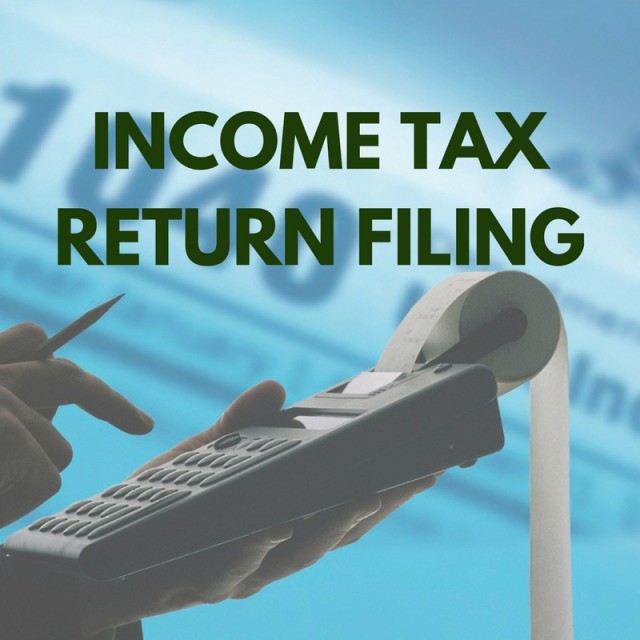Income Tax Return (ITR) Filing
When we assess the provisions of Income Tax Act, 1961 certain heads of income has been provided under Section 14. Income chargeable to income tax shall be classified under five heads of income for the purpose of computation of taxable amount, which is subjected to exemptions and deductions. These are as follows:
- Income from salary
- Income from house property
- Profits and gains of business or profession
- Capital gains
- Income from other sources
And when the earnings of these varied source of incomes has been filed explaining tax liability thereon, details of tax paid and any refunds that have to be given by the government, regarded as Income Tax Return Filing. A return of income is a defined form which can list out the particulars of income and the taxes paid on the same by an individual, firm or organization in a financial year. It is the tax form or forms used to file income tax with the Income Tax Department. It should be kept in a predefined worksheet format where the income figures used to calculate the tax liability are written into the documents themselves. Under section 139 of the Income Tax Act, 1961 provision of return of income is given which states that every person,
- being a company or a firm; or
- a person other than a company or a firm, if his total income or the total income of any other person in respect of which he is assessable under this Act during the previous year exceeded the maximum amount which is not chargeable to income tax
Shall on or before the due date furnish a return of his income or the income of such other person during the previous year, in the prescribed form and verified in the prescribed manner and setting forth such other particulars as may be prescribed.
For the assessment year, the following return forms are being prescribed; there are currently nine different forms available for filing of income tax returns. They go from ITR-1 to ITR-7 and also include the ITR-4S and ITR-V.
ITR-1 for individuals having income from Salary and interest
ITR-2 for individuals and HUF’s not having income from business or profession
ITR-3 for individuals /HUFs having income sources from “Profits and gains of business or profession.” ITR-4 for individuals and HUFs having income from proprietary business and profession
ITR-4S known as SUGAM, it is applicable to individuals and HUFs opting for presumptive taxation scheme under section 44AD/44AE
ITR-5 include trusts, political parties, institutions, colleges, or entities who are required to file the return of income under Section 139(4A), 139(4B), 139(4C) or 139(4B)
ITR-6 for companies other than companies claim deduction under section 11
ITR-7 for all including companies required to furnish return under section 139(4A) or section 139(4B) or section 139(4C& 4D)
ITR- V the acknowledgement form of filing a return of income.
Section 139 of the Act also includes the explanation to the term due date i.e. where the assessee is a company or a person not company, or a working partnership firm is 30th day of September of the assessment year. It is 31st day of October in case of persons other than a company and for the rest of the assesses 31st day of July.Time limit kept for furnishing the return based on the reason that taxpayers have sufficient time to aggregate the data for the whole year and report accurately and in time to the government. Return filed must be signed and verified provide by section 140 of the Act. A return which is not signed and verified is not merely an inaccurate or incomplete return but is not a return at all.
Filing of return within itself does not lead to any drastic consequences to the assessee, it only lead to some way or other such as, for eligibility in all loan applications from Banks, for immigration profile obtaining visa outside India, for obtaining government tenders, registration on panels, for appointment in class one jobs, for startup funding or for obtaining LIC/GIC agency, etc. But Non-filing of Income Tax Return attracts interest, penalty, prosecution and scrutiny from the Income Tax Department. Section 271F of the Income Tax Act, 1961 states that penalty of Rs. 5000/- is imposed for the failure to furnish return of income as required by section 139(1) before the end of the relevant assessment year.
For making it easier to the assesse, concept of e- filing of return has also been introduced by the Government of India; it isthe process of electronically filing Income Tax Returns (ITR) through the internet is known as e-Filing. The income tax department has provided an easy to use platform for users to pay taxes, file ITRs, cross-check TDS through TRACES, download forms, claim refunds, check status of dues, refunds, challans etc. However, a technically-challenged tax-payer may find it difficult to use these services but through adopting this method one can enjoy a hassle-free processing of the annual returns filing exercise. E-filing is simple, easy and convenient for the assesses. One just needs to login to incometaxindiaefiling.gov.in and download the free return preparation software with a host of new features to help you in preparing the Income Tax return and submit your return. So, individual must adopt this method.
Author: This blog is written by Ms. Roopanshi Virang, a passionate blogger & intern at Aapka Consultant.
OUR SERVICES
Company Registration I Trademark I Copyright I Patent I GST I MSME
ISO Certification I Website/App Policy I Legal Documentation
Annual Compliance I Connect Consultant
Visit: Aapka Consultant to get Online Services of CA CS & Lawyers.










